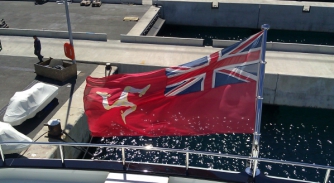Why the yacht survey report is essential reading
Richard Franklin, managing partner of Yacht Survey Partners, explains the importance of engaging with your surveyor before purchase…
Should you read your survey report? Yes, of course, because one way or another it will cost you time and money if you don’t read it and understand the key conclusions.
For pre-sale, pre-delivery and insurance surveys, there’s generally more time for the client’s advisors to engage with the surveyor to ensure the client is fully aware of its conclusions, recommendations and cost estimates, and for them to filter the essentials back to the owner. Here, we are focusing on pre-purchase surveys because this is when the stakes are highest and where the buyer will need to make key decisions within tight deadlines.
Only the pre-purchase survey takes place within a legal context, this usually being the MYBA Memorandum of Agreement (MOA). The key areas of the MOA that are of interest to us are clause 17 (sea trial/condition survey), which sets out the buyer’s right to conduct a survey and sea trial; clause 26 (sea trial), which states that the buyer has the right to reject the yacht without reason within 24 hours of concluding the sea trial; and clause 27 (condition survey), which sets out the options open to the buyer within seven days of completing the condition survey.
The technical sea trial allowed under clause 26 is the surveyor’s opportunity to ensure that everything that should function does indeed function as required and to record all key operating parameters. Our detailed sea-trial protocol usually requires at least four hours (or more if there are noise and vibration specialists on board), during which the surveyor will ensure that the yacht meets expected performance criteria.
While we don’t try to replicate original sea-trial tests, we do want to explore the yacht’s capabilities and limitations. In doing so, the engines will be kept running at full power for an extended period and turning manoeuvres will be undertaken that exceed anything that might be experienced during normal operations. Why? Because where problems are going to present themselves, this is when they will become apparent, nine times out of ten.
Our sea-trial report covering the performance of each system forms part of the final survey report and is essential reading for the buyer. If there are concerns, it’s the buyer’s easiest opportunity to reject the yacht based on its findings. Once the process progresses beyond the sea trial, options become more limited as explained below.

Richard Franklin, managing partner, Yacht Survey Partners
As much as reading the report, it’s what can’t be read in the report that’s important, and the buyer should spend some of their time on their sea-trial meeting the crew and visiting the engine room because they’ll quickly get a sense of how the crew cares for the yacht.
The condition survey allowed under clause 27 is the surveyor’s opportunity to examine in detail every aspect of the yacht that couldn’t be covered during the sea trial. The 150-plus points we examine in detail build a clear picture for the buyer of the condition of each and every system and structure on board and, where there are non-conformities, to define the remedial work required and provide an estimate of the likely cost to rectify any such non-conformities.
In doing so, we pay particular attention to any items that are classed as ‘defects’ within the meaning of clause 27, which defines defects as ‘affect(s) the operational integrity of the vessel, or her machinery, or her systems, or renders the vessel unseaworthy’. Once we’ve defined a non-conformity as a defect and certified it as such, clause 27 states that the buyer has three options: to require the seller to rectify the defects at their own expense, or agree a commensurate reduction in price or, if neither can be agreed, for the MOA to be terminated.
For this reason, if the buyer finds time to read nothing else within the survey report, it should be the list of certified defects, together with the estimated cost to rectify them. These should form the basis of their post-survey negotiations and, ultimately, whether or not the transaction succeeds or fails.
All the above assumes that the buyer has little time or wish to engage in the detail of the survey, but sometimes the opposite is true. Certain clients want to understand as much as they can about their proposed purchase. Some have even been known to read a surveyor’s report in full! Admittedly this is unusual, and even I struggle with reading the hundreds of pages as I edit each report prior to sending, so these are our recommendations for where to direct the buyer’s attention, given the opportunity.
The buyer should be digging into the service history for all the major machinery because regular care and maintenance is key to performance and reliability. As much as reading the report, it’s what can’t be read in the report that’s important, and the buyer should spend some of their time on their sea-trial meeting the crew and visiting the engine room because they’ll quickly get a sense of how the crew cares for the yacht. We also advise checking the spreadsheet and survey web portal carefully, working out how much it’s going to cost and what the priorities should be.
So, in summary, do read your survey report, get comfortable with the numbers and look at the yacht through your surveyor’s eyes, but while you’re on board, chat with the crew and ask them to take you into the areas where you wouldn’t usually be taken to. You’ll soon see what the surveyor picks up when they first step on board, which is whether or not a yacht has had an owner who cares, who has provided the budget requirement and who has employed a crew who have a passion for the yacht. These yachts stand out head and shoulders above the rest.
This article first appeared in The Superyacht Report – Owner Focus. With our open-source policy, it is available to all until 21 November by following this link, so read and download the latest issue and any of our previous issues in our library.
NEW: Sign up for SuperyachtNewsweek!
Get the latest weekly news, in-depth reports, intelligence, and strategic insights, delivered directly from The Superyacht Group's editors and market analysts.
Stay at the forefront of the superyacht industry with SuperyachtNewsweek
Click here to become part of The Superyacht Group community, and join us in our mission to make this industry accessible to all, and prosperous for the long-term. We are offering access to the superyacht industry’s most comprehensive and longstanding archive of business-critical information, as well as a comprehensive, real-time superyacht fleet database, for just £10 per month, because we are One Industry with One Mission. Sign up here.
Related news

New industry body for maritime cybersecurity launches
The International Maritime Cyber Security Organisation launched to raise the standard of cybersecurity risk assessment across the maritime industry
Crew

How to make a fair presentation of risk
Hill Dickinson’s Francesca Conn and David Reardon dissect the Delos v Allianz case and explain what this means for superyacht insurance
Business

What does “choice-of-forum” mean for yacht insurance?
A recent US Supreme Court ruling on marine insurance policies has flagged numerous new legal considerations for American yacht owners
Owner

REG publishes revised Yacht Code
Released on 1 January, this revision from the Red Ensign Group represents the first major update since 2019
Business
Related news
How to make a fair presentation of risk
1 year ago
REG publishes revised Yacht Code
2 years ago
NEW: Sign up for
SuperyachtNewsweek!
Get the latest weekly news, in-depth reports, intelligence, and strategic insights, delivered directly from The Superyacht Group's editors and market analysts.
Stay at the forefront of the superyacht industry with SuperyachtNewsweek



